Related Research Articles

In the art world, a Biennale, Italian for "biennial" or "every other year", is a large-scale international contemporary art exhibition. The term was popularised by the Venice Biennale, which was first held in 1895, but the concept of such a large scale, and intentionally international event goes back to at least the 1851 Great Exhibition in London.

Lubna Agha was an American artist of Pakistani descent who lived in Brookline, Massachusetts.
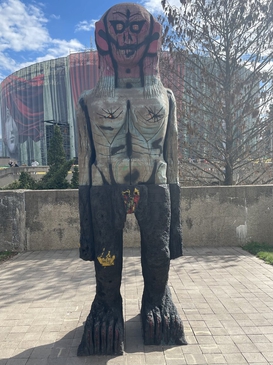
Huma Bhabha is a Pakistani-American sculptor based in Poughkeepsie, New York. Known for her uniquely grotesque, figurative forms that often appear dissected or dismembered, Bhabha often uses found materials in her sculptures, including styrofoam, cork, rubber, paper, wire, and clay. She occasionally incorporates objects given to her by other people into her artwork. Many of these sculptures are also cast in bronze. She is equally prolific in her works on paper, creating vivid pastel drawings, eerie photographic collages, and haunting print editions.
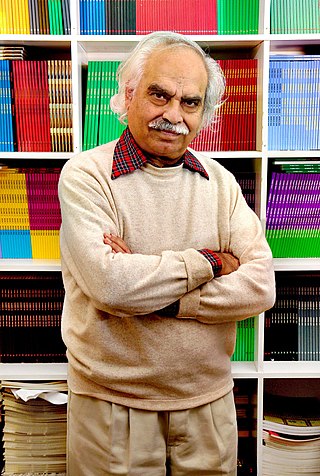
Rasheed Araeen is a Karachi-born, London-based conceptual artist, sculptor, painter, writer, and curator. He graduated in civil engineering from the NED University of Engineering and Technology in 1962, and has been working as a visual artist bridging life, art and activism since his arrival in London from Pakistan in 1964.

Sun Yuan and Peng Yu are artists living and working collaboratively in Beijing since the late 1990s.
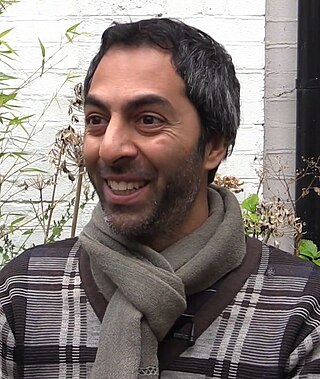
Shezad Dawood is an artist born and based in London.
Rashid Rana is a Pakistani artist. He has been included in numerous exhibitions in Pakistan and abroad with his works in abstractions on canvas, collaborations with a billboard painter, photographic/video performances, collages using found material, photo mosaics, photo sculptures, and large stainless steel works.
David Chalmers Alesworth, (A.R.B.S.) is a UK-based dual national artist, who divides his time between Bristol and Pakistan. Trained originally as a sculptor in the UK, he moved to Pakistan in 1987 and engaged with the popular visual culture of South Asia and with urban crafts such as truck decoration. He teaches art in Pakistan at various institutions including until recently the Beaconhouse National University, Lahore.,

Abdullah Ahmed Khan professionally known as Sanki or Sanki King is a Pakistani graffiti, calligraffiti and street artist, occasionally painting live as part of his exhibits, and collaborating with fashion designers featuring his artwork. He has also works in sneaker art, sticker art, b-boying and parkour in Pakistan.

Shilpa Gupta is a contemporary Indian artist based in Mumbai, India. Gupta's artistic practise encompasses a wide range of mediums, including manipulated found objects, video art, interactive computer-based installations, and performance.

The Samdani Art Foundation is a private art foundation founded in 2011 in Dhaka, Bangladesh that aims to increase artistic engagement between the art and architecture of Bangladesh and the rest of the world. It is best known for producing the bi-annual Dhaka Art Summit, which is the highest daily visited contemporary art exhibition in the world, welcoming over 477,000 visitors in its fifth edition in February 2020. It completed its sixth edition in 2023. The foundation produces education programmes and exhibitions across the year in collaboration with Bangladeshi and international institutions and is one of the most active art institutions in South Asia.
Humaira Abid is a contemporary artist who was born in Pakistan. The main element she works with is wood. Her recent work combines traditional miniature painting with wood sculpture. Her work examines women's roles, relationships, and taboos from a cross-cultural perspective.
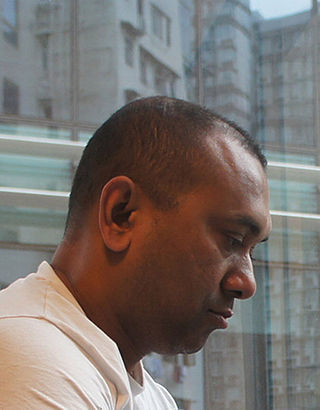
Firoz Mahmud is a Bangladeshi visual artist based in Japan. He was the first Bangladeshi fellow artist in research at Rijksakademie Van Beeldende Kunsten in Amsterdam. Mahmud's work has been exhibited at the following biennales: Sharjah Biennale, the first Bangkok Art Biennale, at the Dhaka Art Summit, Setouchi Triennale (BDP), the first Aichi Triennial, the Congo Biennale, the first Lahore Biennale, the Cairo Biennale, the Echigo-Tsumari Triennial, and the Asian Biennale.
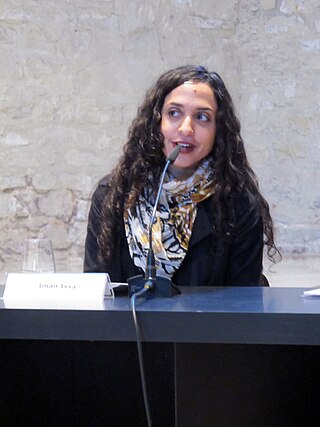
Iman Issa is an Egyptian multi-disciplinary artist whose work looks at the power of display in relation to academic and cultural institutions at large.
Bani Abidi is a Pakistani artist working with video, photography and drawing. She studied visual arts at the National College of Arts in Lahore and at the School of the Art Institute of Chicago. In 2011, she was invited for the DAAD Artists-in-Berlin program, and since then has been residing in Berlin.
Lala Rukh, was a prominent Pakistani teacher, women's rights activist and artist who was known as founder of Women's Action Forum.
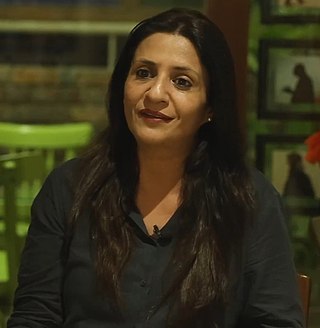
Adeela Suleman is a contemporary Pakistani sculptor and artist, based in Karachi. She is known for the social and political commentary underlying her sculptures, which are created out of mundane, everyday objects.
Aisha Khalid is a female contemporary visual artist, working with miniature painting, textiles, video and site specific installations in architectural spaces.
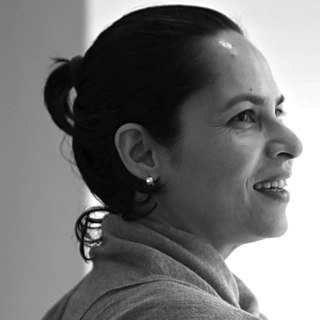
Ayessha Quraishi is a contemporary visual artist who lives and works in Karachi, Pakistan. Having received her initial art training from Karachi-based educator Nayyar Jamil, she has been working for over three decades on the development of her signature technique and visual language. Her practice often integrates various media including drawing, painting, sculpture, performance and digital photography. Quraishi is a prominent artist whose work has been widely shown, both locally and internationally. She participated in the international Istanbul Biennial in 2019. More recently in 2020, Koel Gallery presented Quraishi’s major mid-career retrospective Between Light in Karachi, featuring works spanning thirty-five years (1985-2020) of her prolific and ongoing career. Accompanying the mid-career retrospective, a comprehensive monograph was published in February 2020.

Tazeen Qayyum is a Pakistani-born Canadian conceptual artist working in a variety of media including miniature painting, drawing, sculpture, performance, and video. Her work explores issues of identity, immigration, socio-political conflict, and her Muslim identity.
References
- 1 2 Hashmi, Salima, ed. (2009). Hanging fire : Contemporary Art from Pakistan. New York: Asia Society Museum. p. 108. ISBN 978-0-300-15418-4. OCLC 317471831.
- 1 2 Eid, Diana. "Taxidermy Camel + Oversized Suitcase = Controversial Art". Inventorspot.com. Retrieved 13 July 2020.
- 1 2 "Saatchi Gallery". Artnet.com. Retrieved 13 July 2020.
- ↑ "Huma Mulji". museum.asiasociety.org. Asia Society. Retrieved 13 July 2020.
- ↑ "The Abraaj Capital Art Prize 2013 winners announced". e-flux.com. 29 August 2012. Retrieved 7 July 2020.
- ↑ Mirza, Quddus (13 October 2019). "Between artists and their artwork". The News on Sunday. Retrieved 27 April 2020.
- ↑ "Huma Mulji". Vaslart.org. Vasl Artists' Association. Retrieved 7 July 2020.
- 1 2 "Huma Mulji". Plymouthart.ac.uk. Retrieved 13 July 2020.
- 1 2 "Discussion: International Artist Residencies at Spikes Island in Bristol on 9 February 2017". 365bristol.com. 9 February 2017. Retrieved 18 July 2020.
- ↑ "Terra Foundation Fellows". Terra Foundation for American Art. Retrieved 13 July 2020.
- ↑ "Nigaah Art Awards – Celebrating Pakistani art". Aurora. 12 September 2017. Retrieved 13 July 2020.
- ↑ "Ms Huma Mulji". UWE Bristol. Retrieved 13 July 2020.
- ↑ Baler, Pablo (2015). The Next Thing Art in the Twenty-First Century. Fairleigh Dickinson University Press. pp. 53–66. ISBN 978-1-61147-811-2.
- 1 2 3 "Huma Mulji: High Rise". Universes.art. Universes in Universe. June 2009. Retrieved 8 July 2020.
- 1 2 "Huma Mulji". Kunstaspekte.art. Retrieved 8 July 2020.
- ↑ Farago, Jason (9 September 2014). "Gwangju Biennale: an aggressive exhibition that electrifies South Korea". The Guardian . Retrieved 8 July 2020.
- ↑ "Witnessing from afar: making sense of the Karachi Biennale". 4A Centre for Contemporary Asian Art. Archived from the original on 9 December 2020. Retrieved 25 June 2020.
- ↑ "In the Open or in Stealth : The Unruly Presence of an Intimate Future". Macba.cat. Museu d'Art Contemporani de Barcelona. Retrieved 8 July 2020.
- ↑ Kennedy, Randy (2 September 2009). "Contradictions Remains Vital to Pakistan and Its Art". The New York Times . Retrieved 18 July 2020.
- ↑ "Huma Mulji Exhibite dat the Saatchi Gallery". Saatchigallery.com. Saatchi Gallery. Retrieved 18 July 2020.
- ↑ "Huma Mulji : Project 88 Exhibition". Project88.in. Project 88. Retrieved 18 July 2020.
- 1 2 3 "Huma Mulji". Kbcuratorial.com. Karachi Biennale 2017. Retrieved 8 July 2020.
- ↑ Murray, Rachel (19 December 2011). "Huma Mulji's Suspension in Twilight" . Retrieved 7 July 2020.
- ↑ Sullivan, Graeme, 1951- (2010). Art practice as research : inquiry in visual arts (2nd ed.). Thousand Oaks [Calif.]: Sage Publications. ISBN 978-1-4129-7451-6. OCLC 351322811.
{{cite book}}: CS1 maint: multiple names: authors list (link) - ↑ Schonfeld, Roger C., 1977- (2003). JSTOR : a history. Princeton: Princeton University Press. ISBN 978-1-4008-4311-4. OCLC 777375664.
{{cite book}}: CS1 maint: multiple names: authors list (link) - ↑ Sneden, Eleanor Antoinette. Benezit Dictionary of Artists. Oxford University Press. 2011-10-31. doi:10.1093/benz/9780199773787.article.b00171338.
- ↑ "Huma Mulji". Karachi Biennale 2017. Retrieved 2020-08-04.
- ↑ "HUMA MULJI, Arabian Delight (and details)" . Retrieved 13 July 2020.
- ↑ Sullivan, Graeme, ed. (2010). Art Practice as Research: Inquiry in Visual Arts. SAGE. p. 19. ISBN 978-1-4129-7451-6. OCLC 351322811.
- 1 2 Sohail, Aziz. "Witnessing from afar: making sense of the Karachi Biennale". 4a.com.au. Centre for Contemporary Asian Art. Archived from the original on 9 December 2020. Retrieved 8 July 2020.
- 1 2 Zubair, Hamna (6 November 2017). "An exhibit at the Karachi Biennale has sparked an intense debate about art and elitism". scroll.in. Retrieved 8 July 2020.